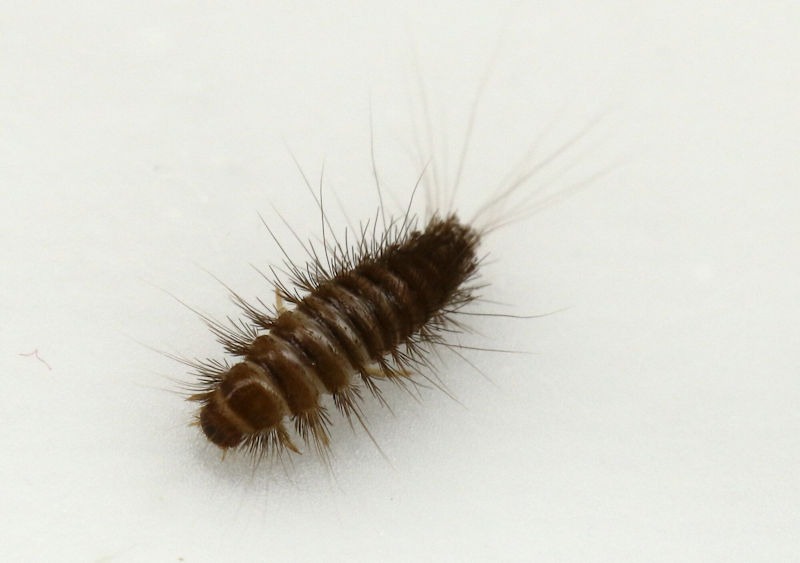How to Recognize an Infestation of Carpet Beetles
So, how do you know if carpet beetles are in your house?
- Visible Beetles: Adults near windows or lights are a clear sign of infestation.
- Larvae: Look for hairy, cylindrical larvae in dark hiding areas like closets or under furniture.
- Damage: Small, irregular holes in carpets, upholstery, or clothing indicate their presence.
- Shed Skins & Droppings: Small exoskeleton remains or pellet-like frass found in infested areas.
Ways to Prevent Carpet Beetle Infestations
By taking these steps, you can protect your home:
1. Keep Your Home Clean
Vacuum carpets, furniture, and neglected spaces like under furniture or in corners. Remove crumbs, lint, and pet hair that attract carpet beetles.
2. Store Clothes Properly
Seal seasonal items, particularly wool, silk, or fur, in airtight containers or garment bags.
3. Inspect Secondhand Items
Thoroughly inspect and clean secondhand furniture or clothes before bringing them into your house. Focus on nooks, crannies, and cushions.
4. Seal Entry Points
Use caulk to seal any gaps around windows, doors, and cracks in walls to reduce the chance of beetles entering your home.
5. Use Pheromone Traps
Set traps near windows or light sources to catch adult beetles and prevent them from reproducing.
6. Call a Pest Control Expert
If the infestation is severe, hiring an exterminator for a professional and safe solution is recommended.
Damage Caused by Carpet Beetles
Carpet beetle larvae feed on natural fibers, which can ruin carpets, clothes, and furniture. They prefer dark, damp areas like closets and basements, which are often hard to find.
As larvae feed, they leave behind holes, shed skins, and droppings that can trigger allergic reactions in some individuals. To minimize damage:
- Inspect your clothes and belongings regularly.
- Take immediate action if you notice larvae or signs of damage.
Prevent Future Carpet Beetle Infestations
How to Keep Carpet Beetles at Bay:
- Schedule Inspections: Regularly check carpets, linens, and storage areas for damage.
- Clean Hiding Spots: Vacuum closets, basements, and areas under furniture frequently.
- Install Window Screens: Prevent adult beetles from entering through open windows.
- Improve Ventilation: Use dehumidifiers in areas prone to moisture to discourage beetle habitation.
FAQs About Carpet Beetles
Q; What attracts carpet beetles to homes?
A: Carpet beetles are drawn to natural fibers like wool, fur, and feathers. Crumbs, lint, and pet hair can also attract them.
Q: Can carpet beetles harm humans?
A: Carpet beetles don’t bite, but their shed skins and droppings can cause allergic reactions in some people, such as skin irritation or respiratory issues.
Q: How can I tell if I have carpet beetles?
A: Signs include adult beetles near windows, hairy larvae in hidden spots, shed skins, frass, and damage to carpets or clothes.
Q: When should I call a professional?
A: If your DIY efforts fail or the infestation is widespread, contact a pest control expert for assistance.
Regain Control from Carpet Beetles Today
Don’t let carpet beetles destroy your home! Regular cleaning, organizing, and sealing entry points can prevent infestations. For severe problems, trust a pest control professional to handle the issue effectively.
References
3. https://www.forbes.com/home-improvement/pest-control/pest-control-cost/
NEED HELP?
If you live in Southern Maryland, or Northern Virginia
FIND YOUR SOLUTION HERE
People, Pet & Pollinator Safe! Pest control for people who care.
